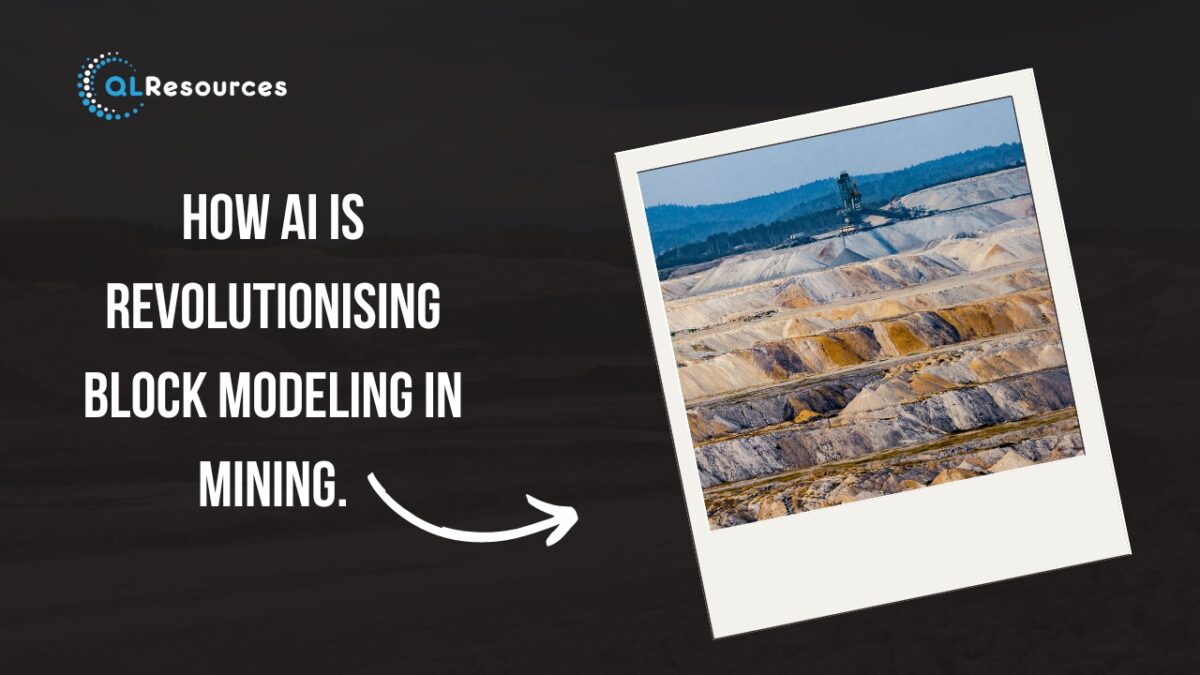Artificial intelligence (AI) has been making significant strides in revolutionising the mining industry, particularly in the field of block modeling. Block modeling is a crucial aspect of the mining process that involves creating a 3D digital model of the mineral deposit to determine the optimal way to extract the minerals from the ground. Here are some ways AI is revolutionising block modeling in mining:
Improved Data Collection and Processing
AI can improve the accuracy and efficiency of data collection and processing by automating certain tasks. This includes collecting data from various sources such as sensors, drones, and satellite imagery. Machine learning algorithms can then process and analyse this data to identify patterns, anomalies, and other important insights. This can help mining companies better understand the characteristics of the mineral deposit and optimise their extraction methods.
Better Geometric Modeling
Geometric modeling is a critical aspect of block modeling, as it involves creating a 3D model of the mineral deposit. AI can improve geometric modeling by using advanced algorithms to identify the most appropriate statistical models to represent the data. This can help mining companies create more accurate models of the deposit, which can be used to optimise mining operations.
Improved Resource Estimation
Resource estimation is a critical aspect of block modeling, as it involves estimating the quantity and quality of minerals in the deposit. AI can help improve resource estimation by using machine learning algorithms to analyse large datasets and identify the most accurate and reliable estimation techniques. This can help mining companies more accurately estimate the value of the mineral deposit and optimise their extraction methods accordingly.
Increased Automation
AI can help automate certain tasks in block modeling, which can lead to increased efficiency and cost savings for mining companies. For example, AI can be used to automatically generate 3D models of the deposit based on data collected from various sources. It can also be used to automatically update these models as new data becomes available. This can help mining companies save time and resources and improve the accuracy of their models.
Better Decision Making
AI can help mining companies make better decisions by providing them with insights and recommendations based on data analysis. For example, machine learning algorithms can be used to identify patterns in data that may indicate the presence of valuable minerals. This can help mining companies make better decisions about where to focus their extraction efforts and how to optimise their operations.
Improved Safety
AI can help improve safety in mining operations by providing real-time monitoring of equipment and personnel. For example, sensors can be used to monitor the condition of mining equipment and alert operators to any potential issues before they become serious. This can help reduce the risk of accidents and improve overall safety in the mine.
Environmental Sustainability
AI can help mining companies achieve greater environmental sustainability by providing insights into the impact of their operations on the environment. For example, machine learning algorithms can be used to analyse data on air and water quality, soil composition, and other environmental factors. This can help mining companies identify areas where they can reduce their environmental impact and develop more sustainable mining practices.
In conclusion, AI is revolutionising block modeling in the mining industry by improving data collection and processing, geometric modeling, resource estimation, automation, decision making, safety, and environmental sustainability. As mining companies continue to adopt and refine AI technologies, they can expect to see greater efficiency, cost savings, and overall improvements in their operations.
